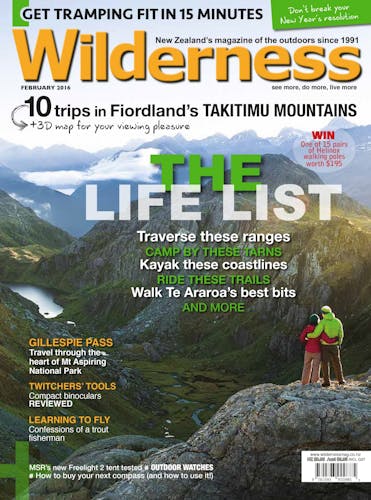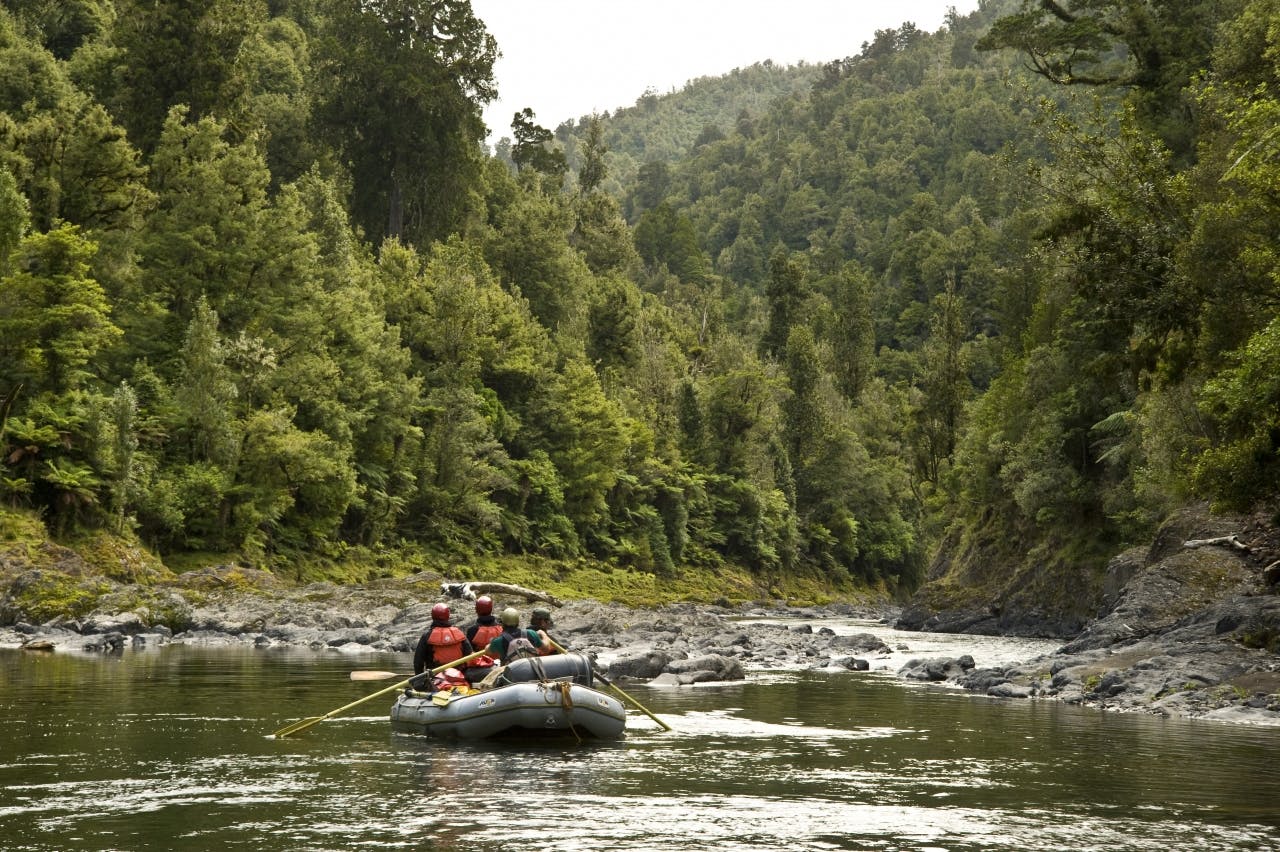Water chooses the easiest path through rugged country, and it’s all downhill. What could be simpler than floating downstream on a raft or in a canoe? Rapids, gorges, snags and floods might add complications, but paddling offers a comparatively easy way to travel through a wilderness. No more so than the mighty Motu, which wends its way through every point of the compass as it forges through the Raukumara Range, the North Island’s most rugged area.
Extremely remote, heavily gorged, and with no easy escape, the Motu is not to be trifled with, but does offer moderate paddling (Grade 2-4). Five men completed the first descent in 1920; they began with three boats and finished with two.
Nowadays, several companies offer commercial rafting trips lasting three or four days. En route you can pay tribute to pioneer paddlers Graeme Eggar and John Mackay, who in the early 1980s helped save the river from being dammed.
Another right of passage for outdoor-minded New Zealanders is paddling the Whanganui River, which has a long history as a passage to and from the North Island interior. For novice paddlers, it’s probably the most navigable of our backcountry rivers.
Another superb whitewater river is the Mohaka, which flows through the Kaimanawa and Kaweka Ranges to reach the sea at Hawke’s Bay (Grade 3-5).
In the South Island, the Clarence River offers relatively straightforward rafting through the high, dry country of inland Canterbury. Several commercial operators run the river, but it’s gentle enough (mainly Grade 2) for suitably experienced and equipped rafters to tackle on their own.








